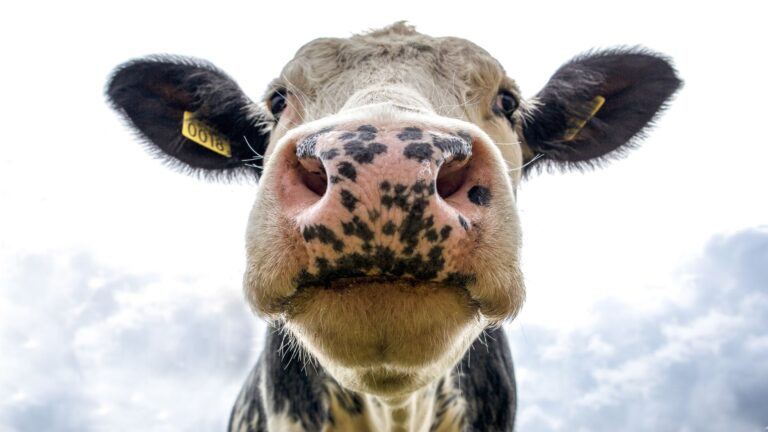Lemur Species You Never Knew About
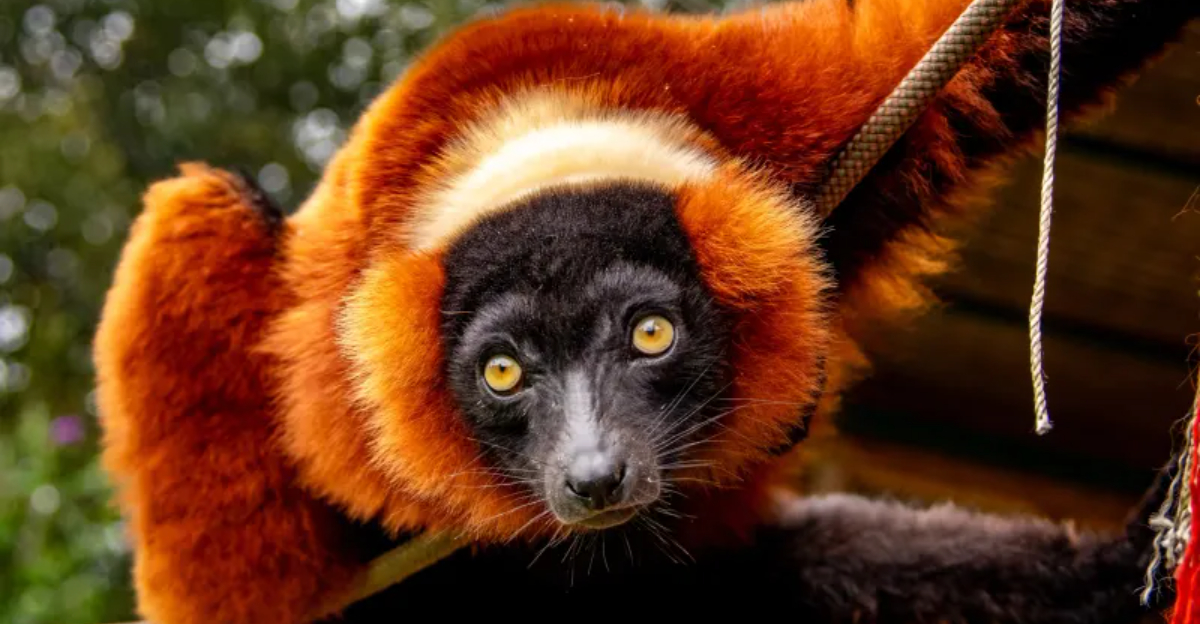
Prepare to embark on an exhilarating journey through the lush forests of Madagascar to discover lemur species that are as intriguing as they are elusive.
These primates, often shrouded in mystery, captivate with their unique traits and enchanting presence. Each lemur is a world of wonder, waiting to be explored. From the treetops to the forest floor, these creatures add a splash of life and color to the vibrant tapestry of their natural habitat.
Their survival stories, quirky behaviors, and striking appearances promise to amaze and inspire. It’s time to uncover the secrets of these extraordinary lemurs and celebrate the astonishing diversity that thrives in one of the world’s most biodiverse regions.
1. Aye-aye
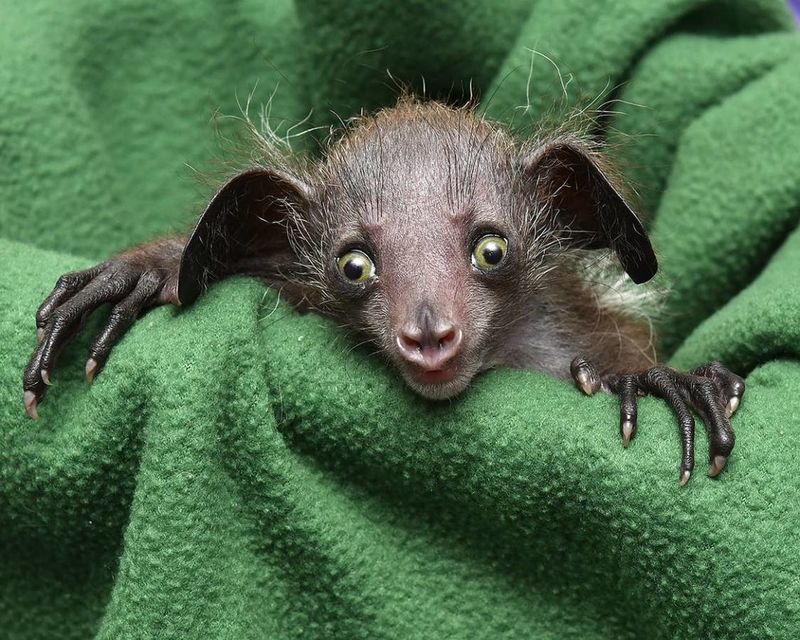
In the shadowy depths of Madagascar’s forests, an unusual creature lurks, stirring curiosity and wonder. The aye-aye, with its nocturnal habits, is anything but ordinary. Its large, luminous eyes pierce the night, seeking out delectable treats hidden under bark.
What makes the aye-aye truly remarkable is its elongated middle finger, a tool of survival and adaptation. This peculiar appendage taps and listens, echo-locating grubs within the wood, like a woodpecker with fur.
A symbol of mystery, the aye-aye challenges our perceptions of beauty and oddity. It navigates the night with grace, embodying the resilience and ingenuity of nature’s design. With its remarkable adaptations, the aye-aye continues to enchant and baffle those lucky enough to encounter it.
2. Indri
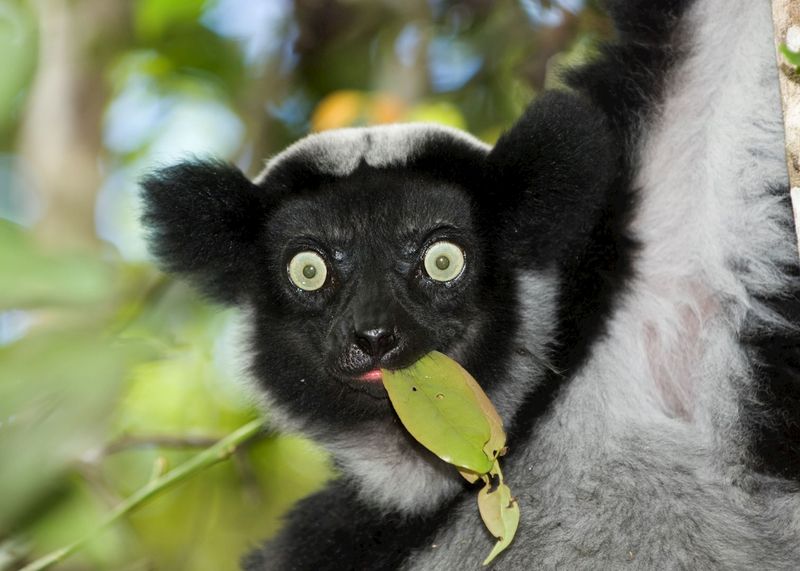
Echoing through the canopy, the haunting call of the Indri resonates like a jungle symphony. As the largest living lemur, it commands an aura of majesty among the treetops, draped in its striking black and white fur.
Renowned for its impressive leaping ability, the Indri can soar distances that defy its size, moving with an elegance that belies its bulk. Its diet consists mainly of leaves, making it a gentle guardian of the forest.
The Indri’s calls serve as a reminder of the delicate balance of life in these verdant realms. They are vocal custodians of their territory, and their presence imparts a sense of harmony and wonder to the rhythm of the jungle’s daily life.
3. Ring-tailed Lemur
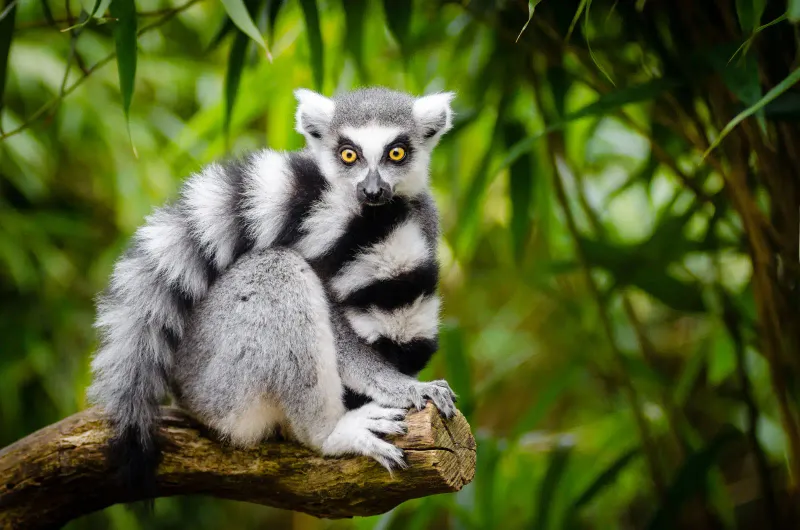
Radiating charm and charisma, the ring-tailed lemur is a true icon of Madagascar. Its distinctive black and white striped tail is a herald of its playful nature and social lifestyle.
These lemurs are sunbathers at heart, often seen relaxing in yoga-like poses, absorbing the warmth of the sun. Their social bonds are strong, living in large groups governed by matriarchal hierarchies.
Strolling the rocky outcrops, they exude a sense of confidence and community, embodying the spirit of their rugged landscape. The ring-tailed lemur is more than just a pretty face; it’s a testament to the vibrant life and societal structure that thrives in Madagascar’s unique environment.
4. Sifaka
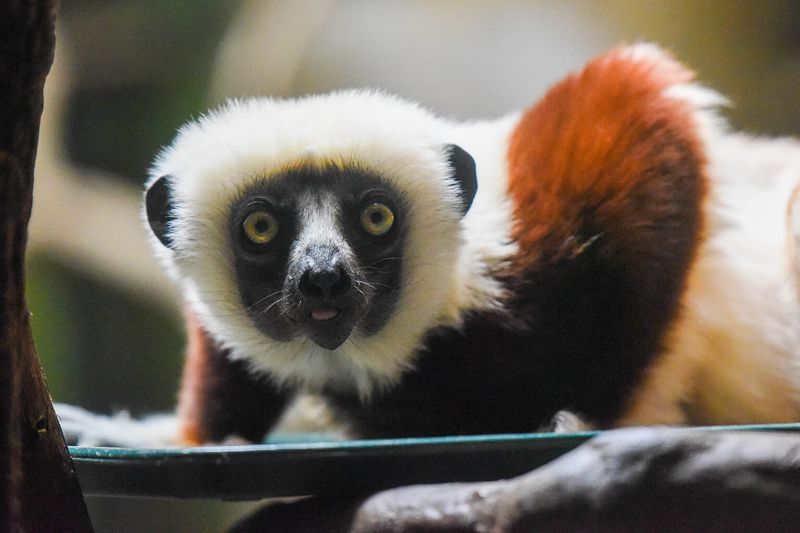
In the heart of Madagascar’s deciduous forests, sifakas perform an acrobatic ballet that defies gravity. Known for their extraordinary leaping prowess, they navigate the trees with a dancer’s grace.
Their unique side-to-side locomotion on the ground is both comical and impressive, earning them the nickname “dancing lemurs.” With a diet rich in leaves, fruits, and flowers, they play a vital role in their ecosystem.
With expressive eyes and a coat as soft as velvet, sifakas are not just leapers but ambassadors of their forest homes. Their rhythmic movements and social interactions paint a vivid picture of life in the canopy, where every leap tells a story of survival and freedom.
5. Black Lemur
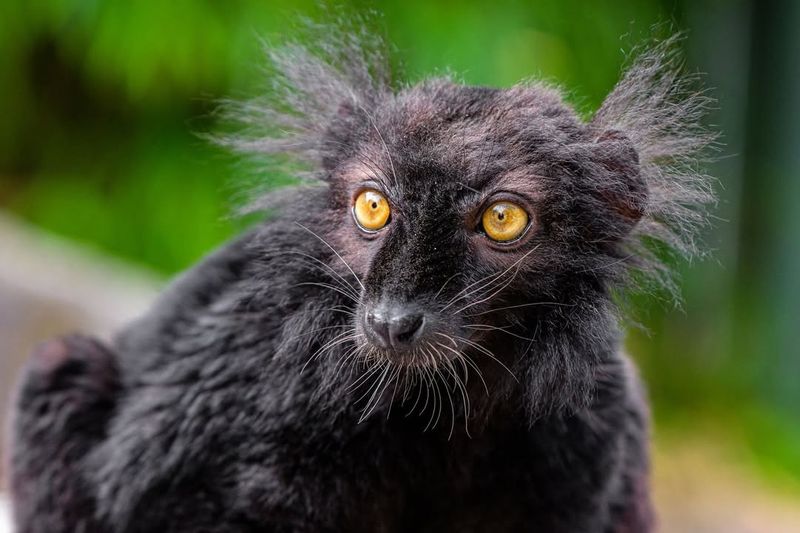
Amidst the vibrant foliage of Madagascar’s tropical forests, the black lemur stands out with its striking orange eyes that seem to hold secrets of the wild. Unlike other lemurs, they boast gender-based color differences; males wear a sleek black coat while females don a chestnut brown.
Their diet is a rich tapestry of fruits and leaves, making them essential seed dispersers in their habitat. Their foraging habits are a constant dance with the environment, contributing to the forest’s health.
The black lemur’s social structure is as dynamic as its appearance, with groups living in harmonious yet spirited communities. Their presence adds a layer of intrigue and color to the lush greenery, showcasing nature’s penchant for diversity and adaptation.
6. Mouse Lemur
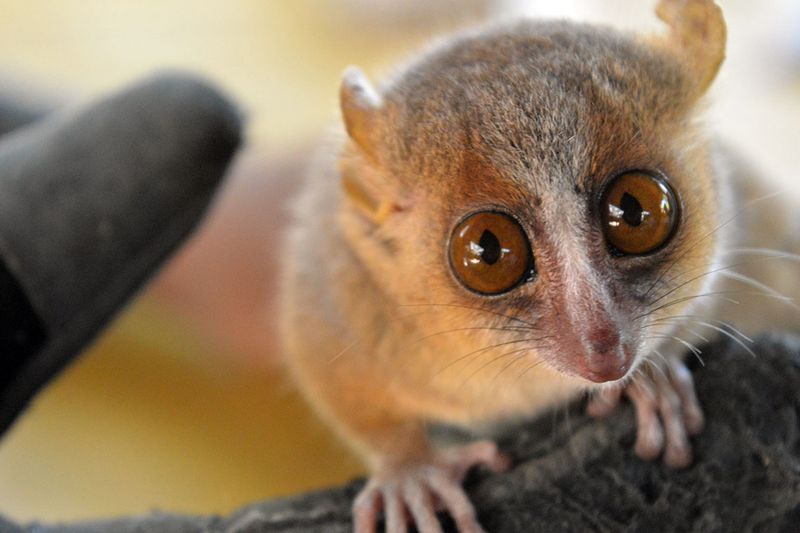
Venture into the underbrush, and you may just catch a glimpse of the diminutive mouse lemur, the smallest primate in the world. With eyes that seem too large for its tiny frame, this nocturnal marvel navigates the night with precision.
These petite primates are masters of survival, foraging for insects, fruit, and nectar under the cloak of darkness. Their size belies their versatility and adaptability, traits that have ensured their survival.
Inquisitive and agile, mouse lemurs are the embodiment of the saying “big things come in small packages.” Their tiny hearts beat to the rhythm of the night, contributing to the rich tapestry of life that thrives in Madagascar’s diverse ecosystems.
7. Coquerel’s Sifaka
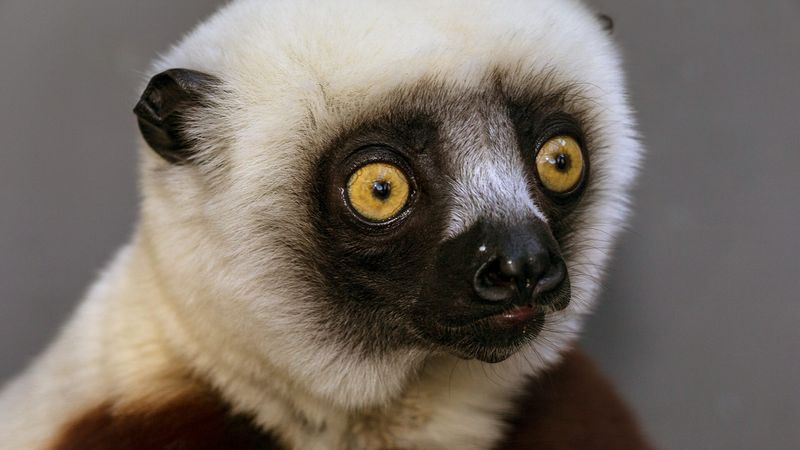
In the dry forests of northwestern Madagascar, Coquerel’s sifaka leaps with a grace that seems almost ethereal. Their striking white and maroon fur contrasts vividly against the arid backdrop, catching the eye of all who pass.
These sifakas are social creatures, living in tight-knit groups that share deep familial bonds. Their ability to leap across trees is a testament to their agility and strength, qualities that help them thrive in such challenging environments.
Coquerel’s sifakas are more than just performers of the forest; they are integral to its health, playing a pivotal role in seed dispersal and plant growth. Their presence is a reminder of the beauty and complexity of the natural world, where life finds a way in even the harshest conditions.
8. Red Ruffed Lemur
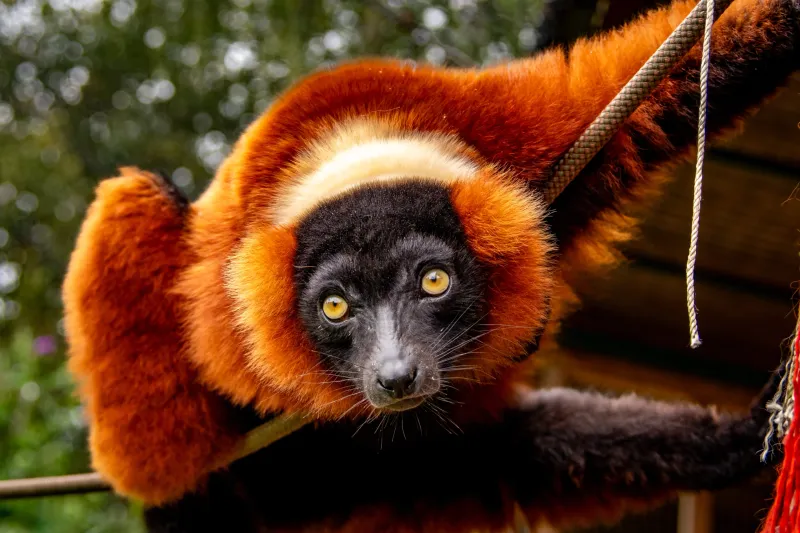
Amidst the lush rainforests of northeastern Madagascar, the red ruffed lemur is a sight to behold with its thick rust-colored fur and striking presence. These lemurs are vocal powerhouses, their calls reverberating through the forest like an orchestra.
Fruit enthusiasts at heart, they play a critical role in their ecosystem by dispersing seeds and maintaining the health of the forest. Their foraging activities are essential to the lifecycle of many plant species.
Red ruffed lemurs are a brilliant blend of beauty and function, their vibrant coats echoing the richness of their environment. They stand as symbols of the intricate balance of nature, where each call, leap, and nibble resonates with the harmony of the forest.
9. Golden Bamboo Lemur
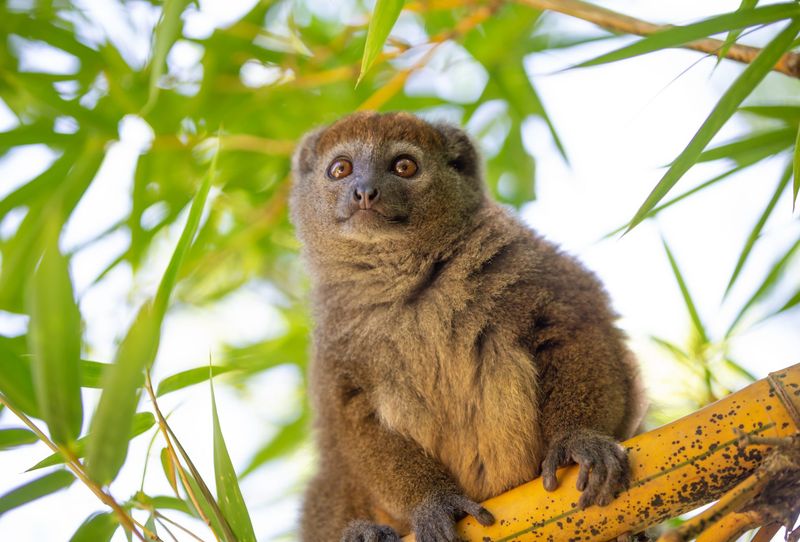
Deep in the damp forests of Madagascar, the golden bamboo lemur munches on its namesake with an appetite that’s hard to match. With golden fur that seems to glow amidst the greenery, this lemur is a master of adaptation.
Unlike other lemurs, their diet is specialized, relying heavily on bamboo, which contains cyanide compounds. Yet, they thrive, showcasing incredible resilience and dietary adaptation.
Golden bamboo lemurs are a testament to the wonders of evolution, embodying the complexity and intricacy of life. Their specialized diets and unique behavior highlight the diversity of the lemur family, each species carving out its niche in the tapestry of Madagascar’s wilderness.
10. Crowned Lemur
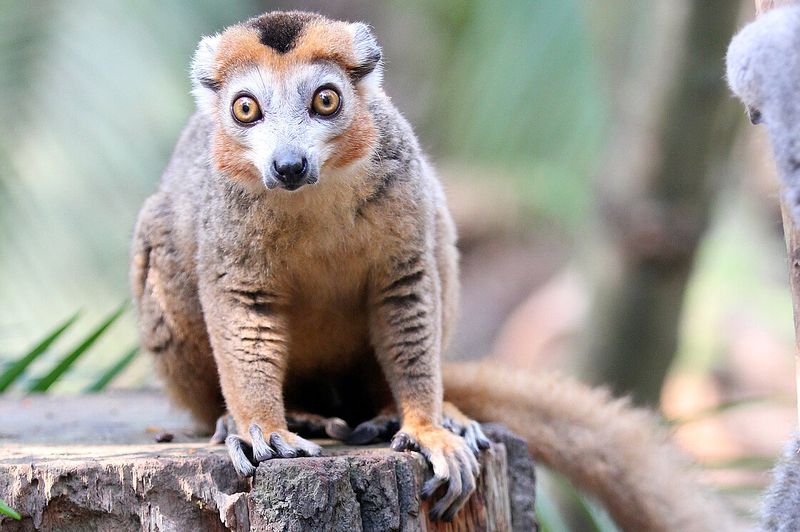
In the dry deciduous forests of northern Madagascar, crowned lemurs reign supreme with a natural crown adorning their heads. This distinctive pattern adds an element of royalty to their already captivating presence.
Their diet is a diverse mix of fruits, flowers, and leaves, making them crucial players in their ecosystem. Crowned lemurs are active foragers, contributing significantly to seed dispersal and plant propagation.
Their vibrant social lives and playful nature paint a picture of harmony and vitality in the forest. Crowned lemurs remind us of the delicate interconnections in nature, where even the smallest creatures wield immense influence on their surroundings.
11. Black-and-white Ruffed Lemur
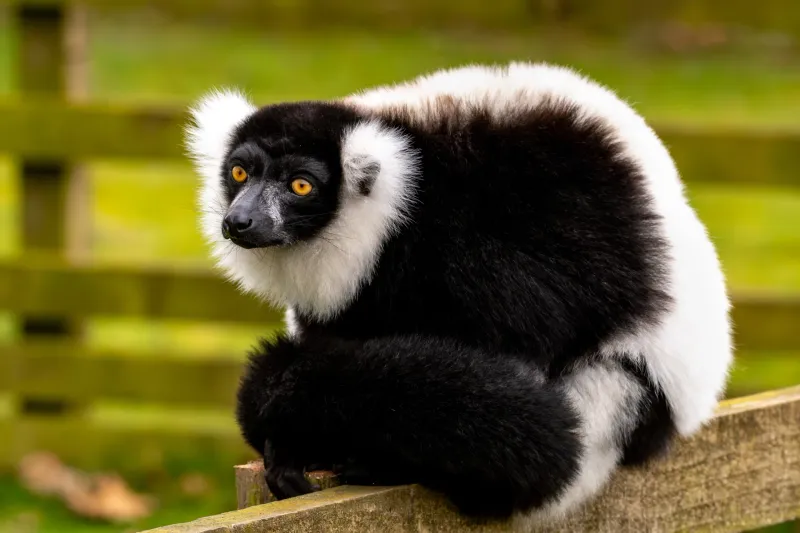
High in the canopy of Madagascar’s rainforests, the black-and-white ruffed lemur is an arboreal architect, weaving through branches with ease. Its striking fur, a dramatic palette of black and white, demands attention and admiration.
These lemurs are social animals, living in groups that echo with their loud, distinctive calls. Their communication skills are as developed as their climbing prowess, both essential to their survival.
Fruit forms the bulk of their diet, making them vital seed dispersers. Black-and-white ruffed lemurs are not just inhabitants of the forest; they are custodians of its health and vitality, adding a striking contrast to the lush greenery of their home.
12. Mongoose Lemur
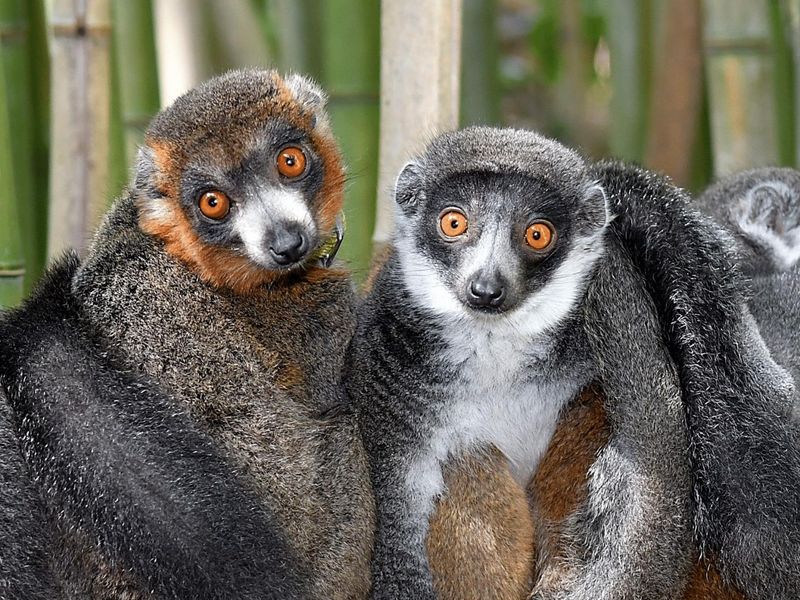
In the sunny, dry forests of Madagascar and the Comoros Islands, mongoose lemurs bring a splash of vivacity with their gray fur and bushy tails. They are social animals, often seen in lively family groups.
Their diet shifts with the seasons, from fruits and flowers to the occasional insect, displaying a remarkable adaptability. This varied diet is crucial in maintaining the ecological balance of their habitat.
Mongoose lemurs are a living testament to the adaptability and resilience required to thrive in changing environments. Their playful antics and social dynamics offer a glimpse into the complex world of these enchanting primates, where alliances and interactions shape the fabric of their lives.
13. Red-fronted Lemur
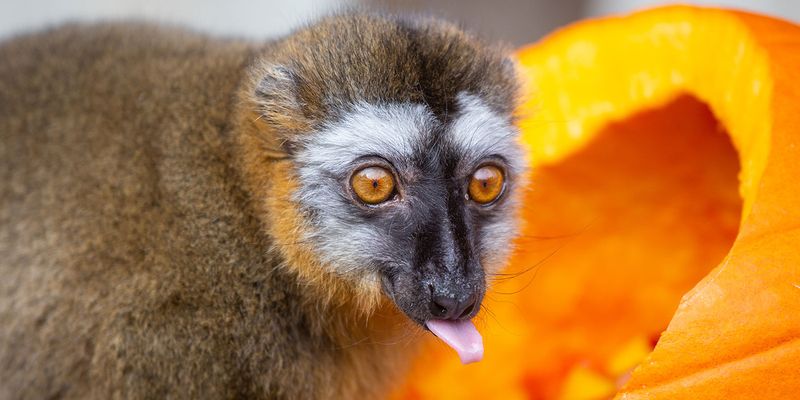
In the mixed forests of Madagascar, the red-fronted lemur catches the eye with its fiery forehead, a splash of color amidst the green. This distinct mark is more than decorative; it holds a key to their identity.
These lemurs are versatile foragers, consuming a diet rich in fruits, leaves, and flowers. Their role as seed dispersers is vital, ensuring the rejuvenation of the forest.
Social and inquisitive, red-fronted lemurs navigate their world with a blend of curiosity and caution. Their presence enriches the biodiversity of their environment, showcasing the vibrant tapestry of life that thrives in Madagascar’s mixed forests.
14. Gray Mouse Lemur
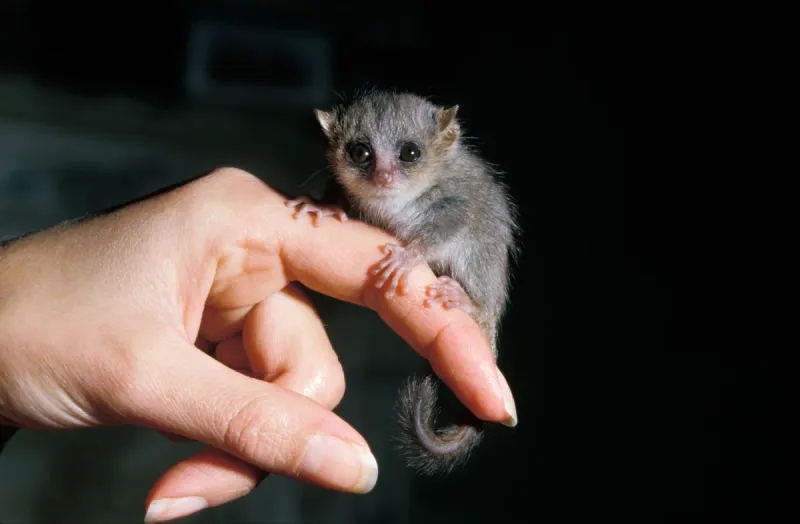
Peer into the shrubby foliage, and you may spot the elusive gray mouse lemur, a tiny nocturnal navigator of Madagascar’s night. Their soft gray fur and large eyes give them an endearing, almost mystical appearance.
These petite primates are adept climbers, often seen leaping gracefully from branch to branch in search of food. Insects, fruits, and flowers form the core of their diet, supporting their energetic lifestyle.
The gray mouse lemur is a testament to the adaptability and resourcefulness required to thrive in the wild. Their nightly escapades and foraging journeys weave them seamlessly into the intricate web of Madagascar’s diverse ecosystems.
15. Silky Sifaka
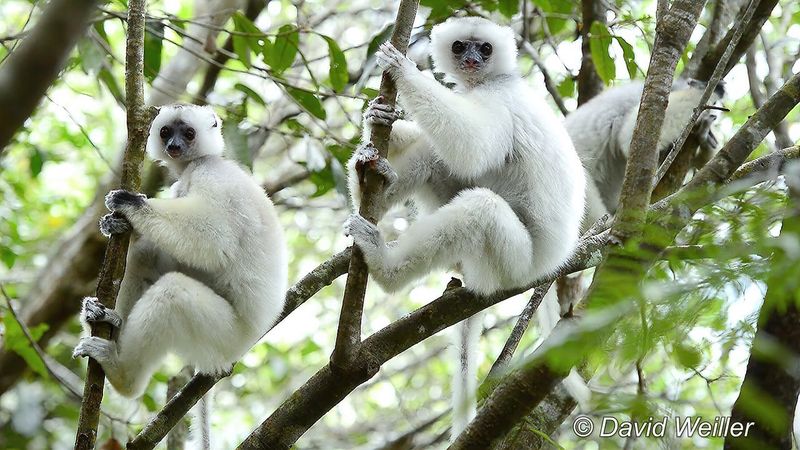
In the montane rainforests of northeastern Madagascar, the silky sifaka moves with an elegance that’s almost ethereal, its long silky white fur trailing like a cloak. These lemurs are acrobats of the canopy, leaping with a grace that seems to defy physics.
Their diet of leaves, flowers, and fruits supports their active lifestyle, making them important players in seed dispersal and forest health. The silky sifaka’s presence is a symbol of purity and vitality in their lush habitat.
Through their agile movements and striking appearance, silky sifakas inspire awe and wonder, reminding us of the beauty and fragility of our planet’s natural treasures. They are a dazzling thread in the rich tapestry of life in Madagascar.
16. Greater Bamboo Lemur
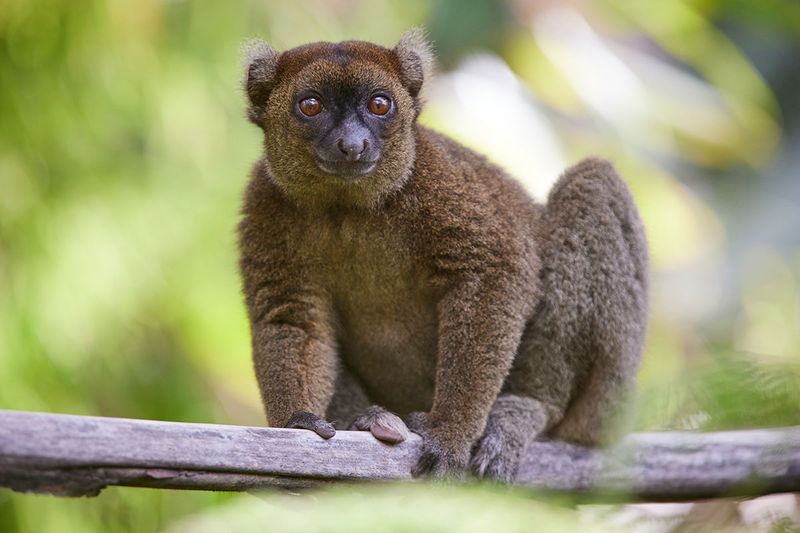
Dwelling in the damp forests of southeastern Madagascar, the greater bamboo lemur is a robust primate with a singular diet. Their grayish-brown fur blends seamlessly into the bamboo thickets they call home.
These lemurs specialize in eating bamboo, relying on the plant despite its cyanide content. This remarkable adaptation highlights their unique evolutionary path.
Greater bamboo lemurs are more than just bamboo connoisseurs; they are symbols of resilience and specialization. Their survival amidst adversity provides a glimpse into the complex interactions between species and their environments, reminding us of the delicate balance that sustains life.
17. Collared Brown Lemur
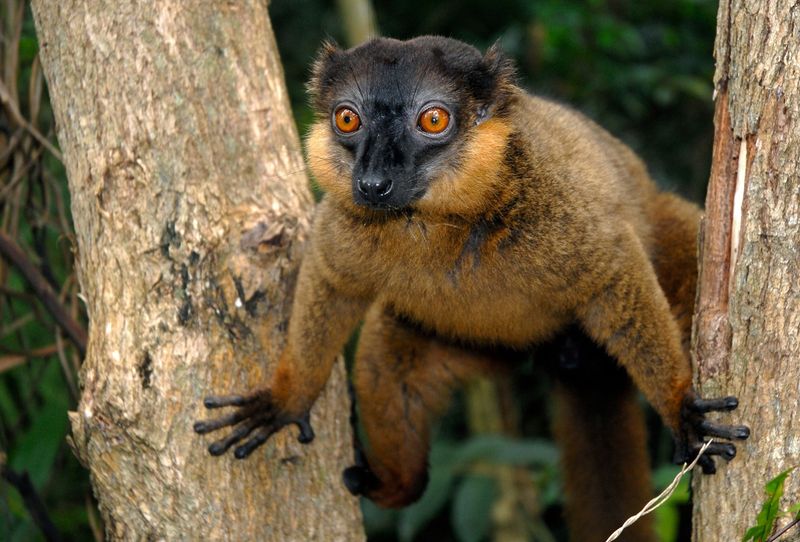
In the verdant forests of eastern Madagascar, the collared brown lemur makes its presence known. A distinctive collar of lighter fur graces its neck, setting it apart from its peers.
Their social structure is dynamic, with groups that work together to navigate their complex environment. Fruits, leaves, and flowers make up their diet, playing a significant role in forest ecology.
Collared brown lemurs are a testament to the cooperative spirit of nature, where teamwork and social bonds ensure survival. Their graceful movements and cohesive groups reflect the intricate dance of life that unfolds in Madagascar’s rich forests, where every creature plays a part in the symphony of existence.




